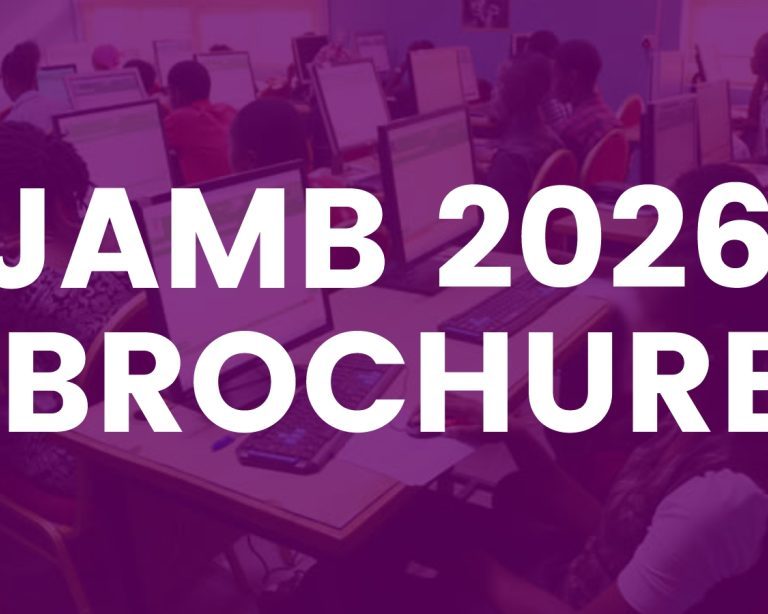JAMB 2025 ENGLISH SYLLABUS
Introduction:
JAMB 2025 ENGLISH SYLLABUS aims to guide the candidates in their preparation for the Board’s examination. It is designed to evaluate the candidates’ ability to:
- Communicate effectively in both written and spoken English.
- Use the English language to learn at the tertiary level.
Table of Contents
- Introduction:
- Sections of the Syllabus
- SECTION A: Comprehension/Summary
- SECTION B: Lexis and Structure
- SECTION C: Oral Forms
- The Structure of the Examination
- Recommended Texts
Sections of the Syllabus
The syllabus consists of three sections:
- SECTION A: Comprehension/Summary
- SECTION B: Lexis and Structure
- SECTION C: Oral Forms
SECTION A: Comprehension/Summary
Topics:
- Description
- Narration
- Exposition
- Argumentation/Persuasion
Details:
- Each of the two passages to be set (one will be a cloze test) will reflect various disciplines and be about 200 words long.
- Questions on the passages will test the following:
- Comprehension of the whole or part of each passage.
- Comprehension of words, phrases, clauses, sentences, figures of speech, and idioms as used in the passages.
- Coherence and logical reasoning (deductions, inferences, etc.).
- The Life Changer by Khadija Abubakar Jalli.
- Synthesis of ideas from the passages (combining distinct or separate pieces of information to form a complete whole).
Objectives: Candidates should be able to:
- Identify main points/topic sentences in passages.
- Determine implied meanings.
- Identify grammatical functions of words, phrases, clauses, and figurative/idiomatic expressions.
- Deduce or infer the writer’s intentions, including mood, attitude to the subject matter, and opinion.

SECTION B: Lexis and Structure
Topics:
- Synonyms
- Antonyms
- Homonyms
- Clause and Sentence Patterns
- Word Classes and Their Functions
- Mood, Tense, Aspect, Number, Agreement/Concord, Degree (Positive, Comparative, and Superlative) and Question Tags
- Punctuation and Spelling
- Ordinary Usage, Figurative Usage, and Idiomatic Usage
Note:
Idioms to be tested shall be those that are formal and expressed in standard British English.
Objectives: Candidates should be able to:
- Identify words and expressions in their ordinary, figurative, and idiomatic contexts.
- Determine similar and opposite meanings of words.
- Differentiate between correct and incorrect punctuation and spelling.
- Identify various grammatical patterns in use.
- Interpret information conveyed in sentences.
SECTION C: Oral Forms
Topics:
- Vowels (Monophthongs and Diphthongs)
- Consonants (Including Clusters)
- Rhymes (Including Homophones)
- Word Stress (Monosyllabic and Polysyllabic)
- Intonation (Words Emphatic Stress)
Note:
Emphatic stress involves the placement of normal stress on words in an utterance for emphasis.
Objectives: Candidates should be able to:
- Make distinctions between vowel types.
- Differentiate between consonant types.
- Identify correct accentuation in individual words and connected speech.
The Structure of the Examination
SECTION A: Comprehension/Summary
- Topics:
- 1 comprehension passage – 5 questions
- 1 cloze passage – 10 questions
- 1 reading text – 10 questions
SECTION B: Lexis and Structure
- Topics:
- Sentence interpretation – 5 questions
- Antonyms – 5 questions
- Synonyms – 5 questions
- Sentence completion – 10 questions
SECTION C: Oral Forms
- Topics:
- 10 questions
Total: 60 questions

Recommended Texts
- Attah, M. O. (2013). Practice in Spoken English for Intermediate and Advanced Learners, Maiduguri: University of Maiduguri Press.
- Bamgbose, A. (2002). English Lexis and Structure for Senior Secondary Schools and Colleges (Revised Edition), Ibadan: Heinemann.
- Banjo, A. et al (2004). New Oxford Secondary English Course Book Six for Senior Secondary Schools, Ibadan: UP Plc.
- Caesar, O. J. (2003). Essential Oral English for Schools and Colleges, Lagos: Tonad Publishers Limited.
- Daniel Jones (2011). Cambridge English Pronouncing Dictionary, Cambridge: Cambridge University Press.
- Egbe, D. I (1996). Mastering English Usage and Communication Skills, Lagos: Tisons.
- Elugbe, B. (2000). Oral English for Schools and Colleges, Ibadan: Heinemann.
- Grant, N. J. H, Nnamonu, S. Jowitt, D. (1998). Senior English Project 3 (New Edition) Harlow: Longman.
- Idris, U. (2001). Oral English at Your Fingertips for Schools and Colleges, Lagos: M. Youngbrain Publishers.
- Igiligi, E. C. and Ogenyi, S. O. (2010). Grammar and Composition in the G.S.M. Age, Enugu: Joe Hills Production Services.
- Jauro, L. B. (2013). Oral English for Schools and Colleges: A Teaching and Learning Approach, Yola: Paraclete Publishers.
- Nnamonu, S. and Jowitt, D. (1989). Common Errors in English, Lagos: Longman.
- Obinna, M. F. (2001). University Matriculation Use of English (Fourth Edition), Port Harcourt: Sunray Books Limited.
- Ogunsanwo, O. Duruaku, A. B.C, Ezechukwu, J and Nwachukwu, U. I (2005). Countdown English Language (Revised Edition), Ibadan: Evans.
- Olatoye, S. (2006). The Silent Teacher, Ado-Ekiti: Segun and Sons Enterprises.
- Oluikpe, B. O. A, Nnaemeka, B. A, Obah, T. Y, Otagburuagu, E. J. Onuigbo, S. and Ogbonna, E. A. (1998). Intensive English for Senior Secondary School 3, Onitsha: Africana – FIRST Publisher.
- Tomori, S. H. O (2000). Objective Tests for School Certificate English: Practice in Lexis, Structure and Idiom (Reprinted Edition), Ibadan: Heinemann.
- Ukwuegbu, C, Okoro, O., Idris, A. U., Okebukola, F. O. and Owokade, C. O. (2002). Catch-up English for SSCE/UME, Ibadan: Heinemann.






